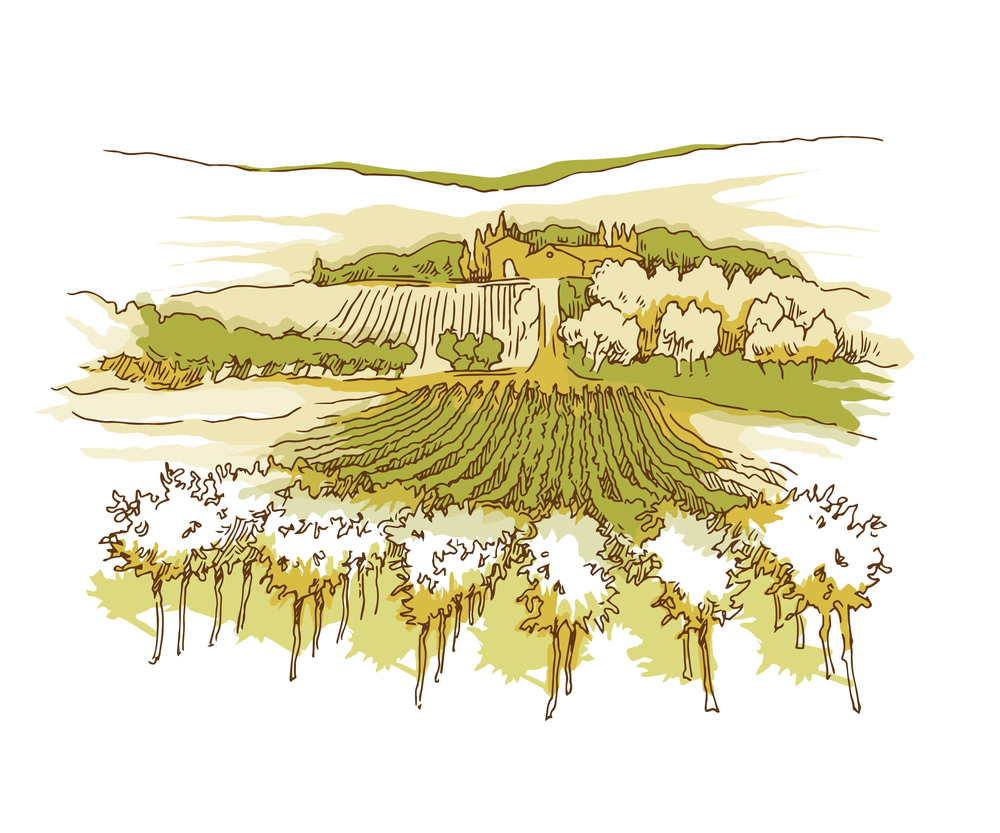
It’s not just about the soil…
Terroir, derivative of the medieval word terratorium, simply means land and or region in French. In winemakers’ parlance, however, it encompasses a lot more – it refers to the sum of environmental factors that influence a wine’s character, such as the soil, slope, elevation, the rainfall, the exposition to the sun, and the fluctuations in temperatures. The first use of the expression “terroir” in the context of wine is usually attributed to the French landowner, Denis Morelot, of Burgundy, who reportedly used the term in the 1600s. But the priorities embraced by quality minded European vintners have always focused on the land, ever since the Cistercian monks cultivated vines in the Cote d’Or a few centuries earlier. In fact, it was regarded as the bedrock factor determining quality in Old World winemaking.
This well-established philosophy of terroir as the foundation defining the essence of an excellent wine was first challenged in the 1950’s by Max Schubert, a relatively inexperienced young Australian winemaker. Schubert believed that the emphasis should be not on the terroir but rather on the integrity of the varietal and more importantly, on the skill and artistry of the winemaker. His first experiment was with Shiraz, the local name for Syrah. Schubert eschewed the ubiquitous Cabernet Sauvignon, Merlot or any of the other traditional red Bordeaux varieties. His early attempts were not successful. Undaunted, he persevered. Over the next two decades, Schubert’s Grange Hermitage became Australia’s most celebrated wine, achieving worldwide recognition, collecting an impressive array of medals in international competitions.
This novel concept of defying the importance of terroir and defining quality by different criteria found a larger, global audience in the 1970’s and 1980’s, thus, paving the way for the New Word winemaking experiments. Schubert’s experiment was to shatter the unshakeable importance of terroir, opening the possibilities of replicating some of the characteristics previously the preserve of old-world wines. The result has been a burgeoning market of moderately priced wines from countries such as Australia, New Zealand, Chile, South Africa, etc., within little more than a single generation. Many of these so-called “modern wines” exhibit the characteristics previously only associated with “old-world quality” − balance, depth, and length; even some complexity.
Turkey (which just happens to be my native country) is one of the countries experimenting with this new philosophy. Even though Anatolia, the birthplace of wine making, dating back six thousand years, has played a pivotal role in the history of early wine, the Turkish wines produced a few decades ago were generally regarded as somewhat mediocre in terms of main quality indicators. The wave of new wine makers with their emphasis on the significance of the vintner’s vision and the integrity of varietals, has resulted in some enchanting wines displaying intriguingly distinctive and complex tastes along with balance, depth and length.
Like Italy, Turkey is endowed with many indigenous grape varieties, known only to wine lovers within the country’s borders. Some wines are blended with international grape varieties, but more exciting wines are made from indigenous varietals. Ampelographers estimate that Anatolian peninsula is home to between 600-1200 indigenous varieties of vitis vinifera but only a small fraction of them are grown commercially. The overall climactic conditions and soil composition of the Anatolian peninsula firmly place Turkey on the wine belt – the sixth largest grape producing country worldwide with almost 4 million tons of grapes produced annually. Ironically, even though Turkey is one of the world’s largest grape producers, only a very small percentage is used for winemaking. With six prime wine producing regions in the country, each with their individual identities, all have steadily gained in recognition of their wines. Of these six areas, however, the highest quality wines are generally regarded as originating from Thrace, the Aegean Coast and Cappadocia.
The new wave of winemakers of the country are challenged – to put it mildly by the conservative government. Although the traditional Islamist AKP party denies that it actively discourages the consumption of alcohol, excessive taxes levied on wine tend to make it prohibitively expensive. Since 2013, promotion of alcohol, including advertising has been illegal. This obviously presents a major hurdle for fledgling winemakers, prompting them to pursue success in the international arena. Against these odds, though, Turkish wines are gradually taking their place center stage in Europe, thanks to the unique indigenous varieties native to the Anatolian peninsula and, most importantly, to a new generation of revolutionary winemakers.
